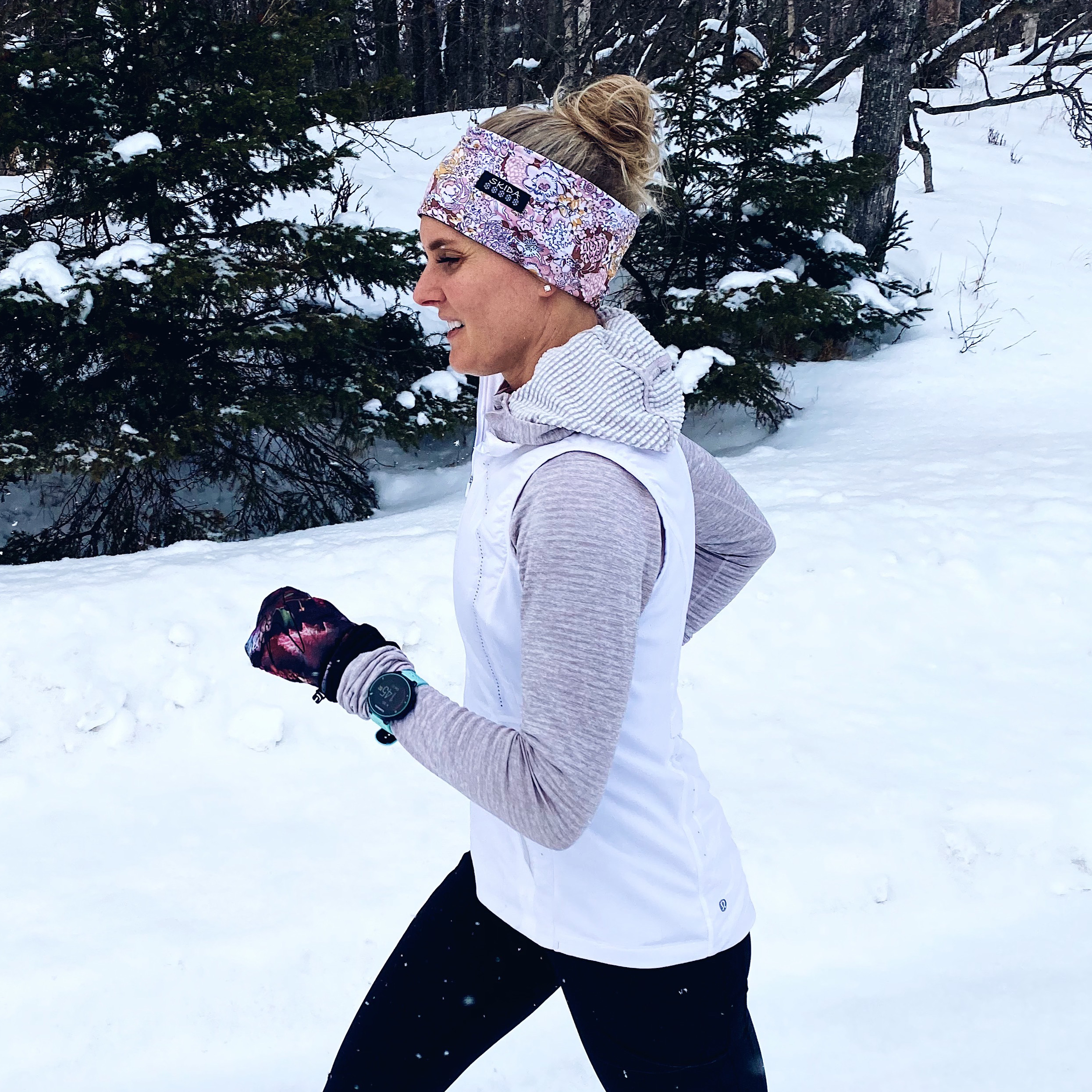After living in Alaska for 15 years (and Minnesota the 25 years before and after that), I am no stranger living and training in winter weather. The cold temps, wind, precipitation, and all the different winter weather variables make it challenging. Top that, the snow can vary from hard and crunchy to deep and sand-like, and then add slippery ice that could result in a very bad fall. When combining these things together, it makes you want to give up on running during the winter altogether.
One of the most commonly-asked questions I get is in regards to good footwear for the snow and ice that many of us have to deal with during the winter. When I lived in Alaska, Anchorage had a solid 6 months of winter, and during that time, the roads are covered in snow and ice that entire time. It made training really difficult, but good footwear made it possible.

There are two different traction devices I use for running on the ice and snow. I prefer the Icebugs (left picture) when running on icy surfaces, and I find the studded shoes with screws (right picture) grip better on the snow.
Icebugs
The Icebug running shoes come with carbide steel studs already in the bottom of the shoe when you purchase them. Each stud is pretty short, so there isn’t a lot of length to grip into deep snow, but they are absolutely amazing on the ice. When I wear these shoes, I feel so confident running on the ice, and even the slipperiest black ice is no match for these shoes. I can take corners at 90 degrees and have no fear falling while wearing these. We got quite a bit of ice in Anchorage where the temps will warm up, and then everything will melt, before refreezing into one big skating rink, so these shoes were vital for the winters in Anchorage.
There are a few different models that vary from waterproof to water-resistant and less cushioning to more cushioning. The up-front cost of these shoes is a little higher, but I get a ton of miles out of them. My previous pairs lasted three winters, and I used them nearly every day. I have never lost any of the studs, but if you happen to, the company will send you a replacement stud.
One thing to note about these shoes is that they are not quiet. They make a fairly loud click-clacking sound on the ice, so you might wake up the neighbor’s dog when heading out for a run. Ha! The other thing to note is that you can wear these on dry pavement without damaging the studs. It isn’t too uncomfortable to run on dry pavement in these, but I prefer to run on ice or snow when wearing these so the studs have something to dig into.
I have worn the Icebug NewRun and Icebug Arcus models. Both are great with a little more cushion in the Arcus. Sometimes you can find previous models on Amazon, depending upon your size. And I would have these same suggested models for the men as well.
Icebugs are not the only brand of studded shoes. They were the first brand we started carrying at the running store I used to work at in Anchorage, but other brands have also surfaced in the last several years including: Salomon Spikecross and VJ Ace.
Studded Shoes
The studded shoes with screws in the picture on the right have 10 sheet metal screws drilled into each shoe (20 screws total between the pair of shoes). I used a regular road running shoes with the head of the screw sticking out of the shoe. When drilling them in, I space them out with six screws in the forefoot, 4 screws in the heel, and I position towards the outer edges of the shoe.
These sheet metal screws can be found at your local hardware store for a very minimal cost. I’ve linked some HERE on Amazon, but it is a pack of 100, which is a lot. I also came across there Icespikes for studding your shoes. I have never tried them, but they look promising. You will drill the screws into the bottom of the shoe, and I always put them around the outer edge of my shoes. (I have a Reel on my Instagram account here if you want to watch this process in action.)
These screws are longer than the Icebug studs, so they will grip into packed snow better. And since you are wearing your own shoes, you can get a good, comfortable fit. The screws will wear down after a while, so you may need to replace them one time during the winter. But then once spring comes, you can take all the studs out and continue to use the shoes on the clear pavement again.
Like the Icebugs, these studded shoes are not the most comfortable to wear on the clear, dry pavement. But you can! Since the screws aren’t able to sink into anything soft, you can feel the screws when you’re running–not the sharp end (unless your shoes are really thin!)–but just the fact the screws are in your shoes. Once again, it isn’t that uncomfortable but annoyingly uncomfortable.
While the screws do really well on snow, they do not grip into the ice, so avoid wearing the studded shoes on sheer ice.

There are a few other options for getting traction on the snow and ice. The following are good options, in my opinion, but the first two options are superior. However, there are times that traction devices that attach to your shoes would be appropriate and may be a better option for you and your situation.
Yaktrax – A lot of people have heard of Yaktrax, but honestly, they are not my favorite. The coils on the bottom of the Yaktrax definitely won’t grip into the ice, but they will help some on the snow. The studs on the front of the Yaktrax run version did a mediocre job gripping on the ice for me. Mostly, I found the coils to be uncomfortable on my feet, and they definitely altered my gait. On a long run several years ago, I tweaked my knee from wearing them too long. I think these are an okay option if you have/want just one pair of running shoes and won’t be running very much or very long on snowy surfaces.
Nanospkes – The traction device I would recommend over the Yaktraxs are the NANOspike by Kahtoola. They are going to be more suitable for the ice and snow. These traction devices are going to be comfortable underfoot and more secure on your foot because of how it wraps over your shoe. This could be a good option for you were going to be running on icy conditions just a few times a winter, or if you were going between icy and dry surfaces, then you could easily put them off/take them off if necessary.
I hope this gives you some options for running on the snow and ice. I also hope this motivates you get out the door more and helps you feel confident running in these conditions. We all know it can be harder to motivate ourselves during the winter, but I’ll bet you will still never regret getting out for some fresh air, clearing the mind, and rejuvenating the soul!







I LOVE your suggestions; pros, cons, and a short write up. Easy peasy. Thank you so much!
Glad you enjoyed it!
Thank you for your insights. I just want to let you know that the link to the Kahtoola Nanospikes is obsolete and should be updated to the newer model of Nanospike.
Thank you! It’s fixed now.